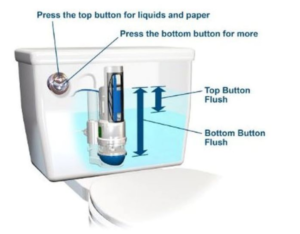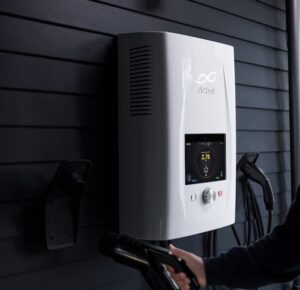Let us see how the math will work out in the girl’s toilet. An average human flushes the toilet 5 times every day. For this example, let us assume 1 time is for solid waste, and 4 times are for liquid waste. That means around 8 gallons of water are flushed by one single student per day, and 1440 gallons are flushed in the 180 instructional days per year per student. However, with the dual flush option, when we use the half flush (which is more convenient for liquid waste), we flush 0.8 gallons per use. This means 4.8 gallons are flushed by one single student per day, and approximately 864 gallons are flushed in the 180 instructional days per year per student. Thereby saving approximately 576 gallons every year (but of course, the number of times the half flush and the full flush is used by a person will vary). This small change alone gives us 40% savings!
This letter isn’t intended just for my school, but also all other schools in NJ districts. In addition to schools, we should encourage existing residential and commercial buildings to use dual flush fixtures during replacements of faulty fixtures by giving efficiency tax breaks. We can see a huge change when we save water in NJ schools, residential, and commercial buildings total. I’ll look at my household as an example. We’re a family of 4, and we have the standard toilets. Let’s keep the assumption that 1 flush is for solid waste, and 4 flushes are for liquid waste. When the calculations are completed, you’ll come to the fact that 11680 gallons are being flushed every year with a standard toilet. But with a dual flush, only 7008 gallons are flushed. This gives us 40% savings every year! In commercial buildings, this can exponentially scale up.
For new builders, this should be mandated as their building code. You could start by mandating it for the new/existing constructions for the state of NJ. Several people go in and out from the public restrooms of commercial buildings, so we’d be saving a lot more water when only dual flush toilets are used. Dual flush is universally adopted in Australia, Singapore, New Zealand, Israel, and many other countries including India.
It is time for America to save water one flush at a time. I would love to hear from you on what are your plans for NJ, and how I can help you achieve some of these while learning in your guidance.
Sincerely,
Rhea Rawat, Grade 7
John Adams Middle School, Edison, NJ
Note : Blog originally posted on WIX : Mar 20, 2021



![Read more about the article Rainwater Harvesting – Solving Overflow [Part 2/3]](https://krucs.com/wp-content/uploads/2022/05/cover-photo2-300x200.jpg)